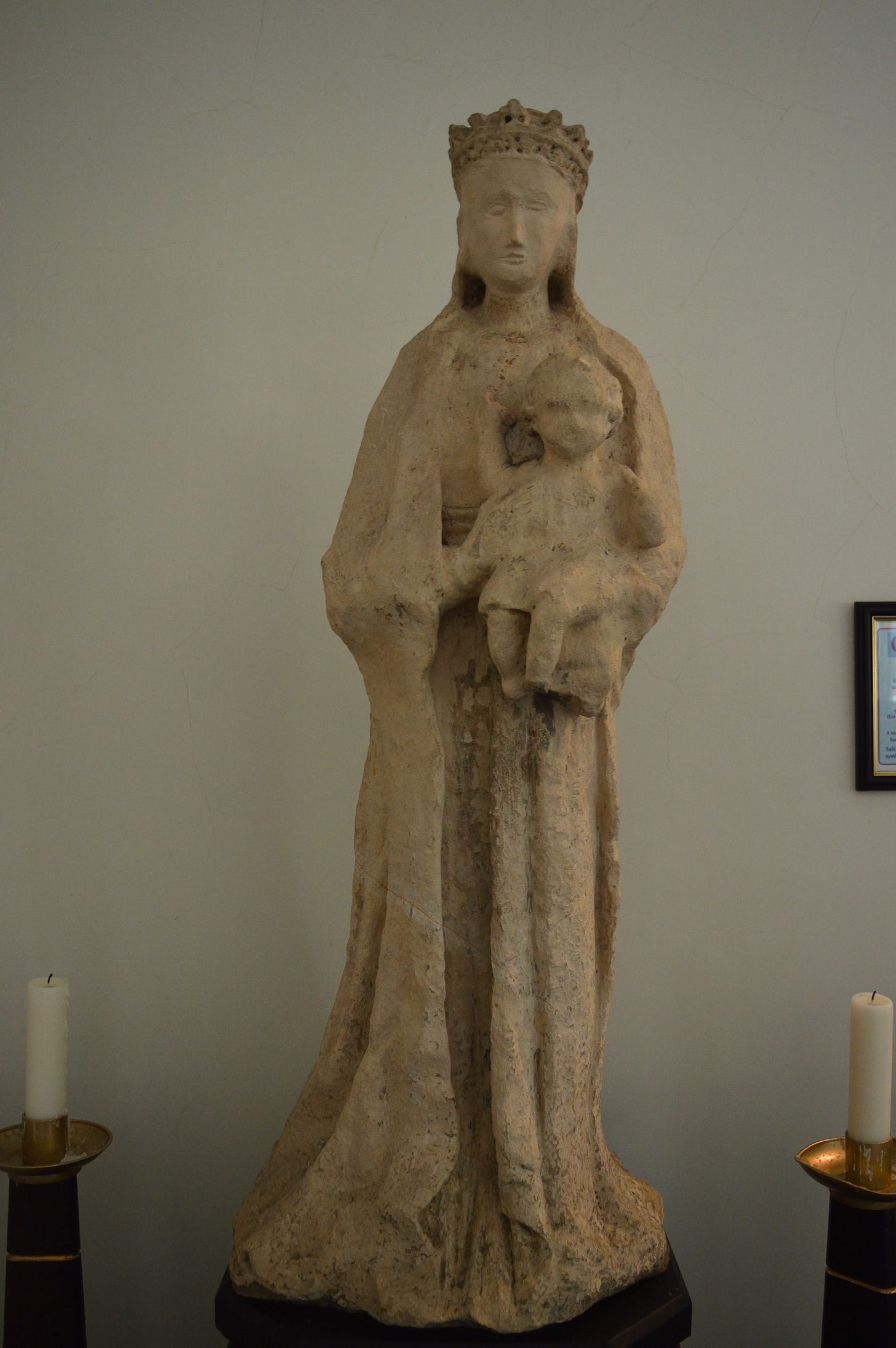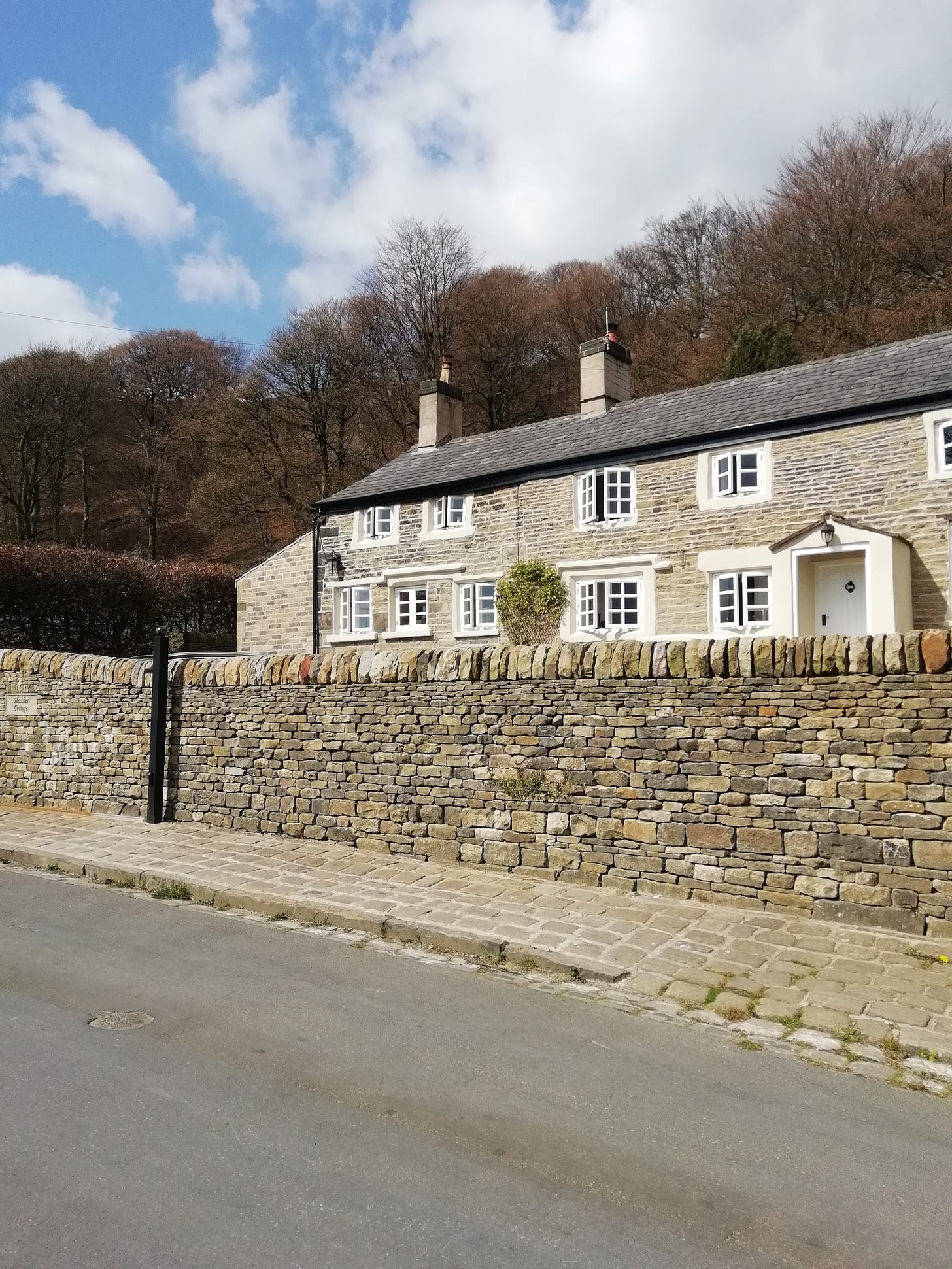On Good Friday I posted a picture of a place where a pilgrim cross once stood, on the road to Whalley Abbey. I first looked for the post I was convinced I had written on this route, in order to link to it. Alas, the post turned out to be entirely imaginary; I thought I had written it, but it seems I had written it only in my head. So perhaps this week would be a good time to finally put it down in pixels.
In this post I will show you some parts of a pilgrim route to Whalley Abbey (Lancashire, north west England). Why people went there is not clear; there are no records of particular relics, which were often a draw, and there are no written records of pilgrimages. But in this part of England monastic houses were uncommon and so perhaps it was simply the act of visiting a holy place which attracted pilgrims. The abbey was almost completely destroyed, and only one statue survives to indicate what it might have contained. The face of Our Lady has, sadly, been disastrously “restored” after she spent a few hundred years in the river nearby. She now sits in the Catholic church which stands next to the abbey site.
On the banning of pilgrimages and Dissolution of the monasteries , pilgrimages to monasteries and cathedrals stopped, the pilgrim (tourist) industry was wiped out and a whole network of roads and routes began a long decline. Nowadays there are numerous books which trace the main routes to the big places of pilgrimage; what I am going to show you today is one of the minor ones, which only survives in isolated sections.
We begin at Holcombe, at the original small village where our pilgrim route from the south is first identifiable. It’s part way up a steep hill and, remarkably, some medieval buildings survive in part.
This is one of the buildings that has a medieval core, with a 17th century frontage, and it is believed to have been a hostelry for pilgrims; they would stay here at night before preparing to ascend the hill the next day.
This is the start of the road, looking down towards the building above, which is hidden behind the trees on the right. The buildings you see here also have medieval elements. The road continues as a trackway and then splits; on foot, you pass along steep and winding paths, trudging uphill constantly.
Keep reading with a 7-day free trial
Subscribe to Incola ego sum in terra to keep reading this post and get 7 days of free access to the full post archives.






